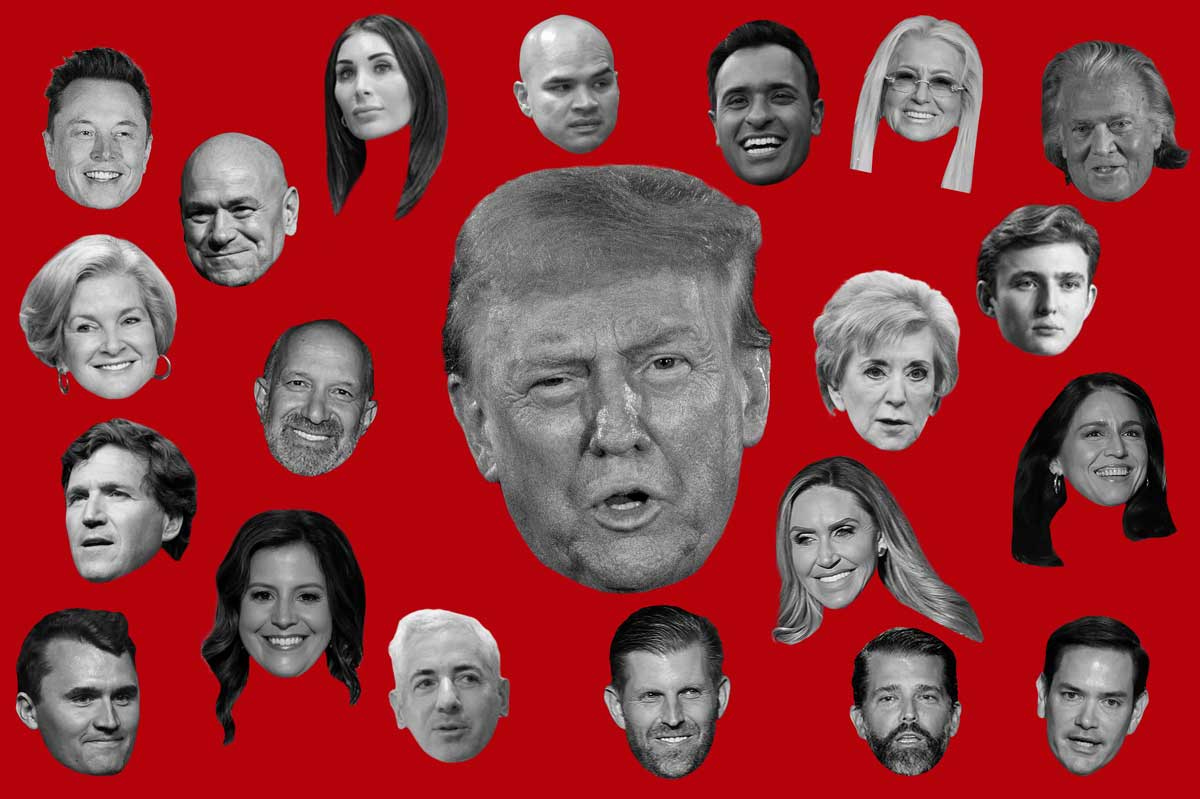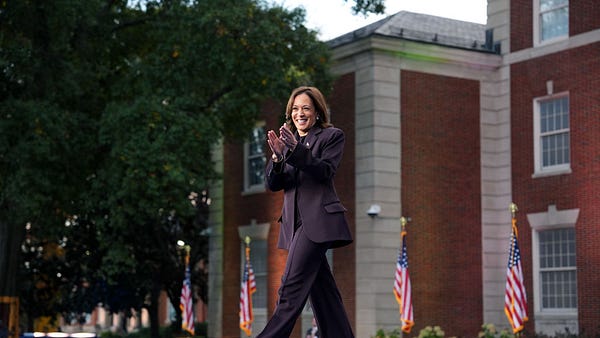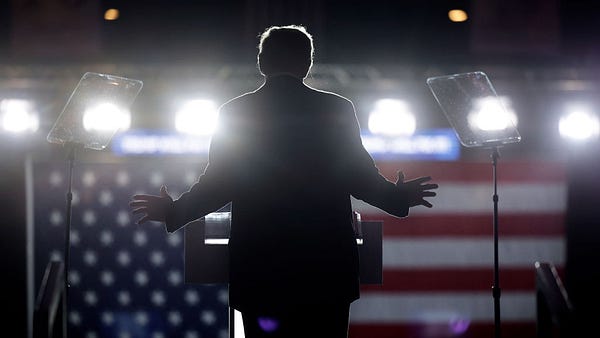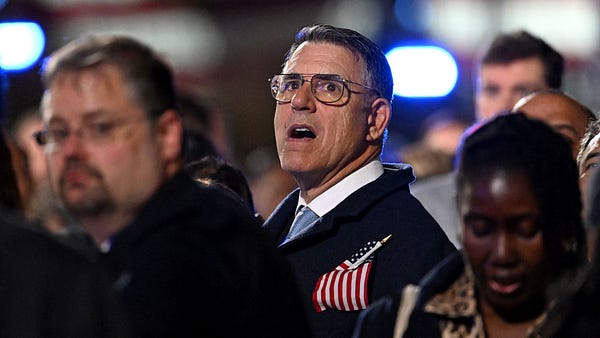
The Free Press

If you had said on January 7, 2021, that in the summer of 2024 Donald Trump would not only be the Republican nominee but was also poised to win in a landslide in November, you would have been laughed out of the room.
The guy who never accepted the results of the 2020 election, even after exhausting his legal challenges in the courts? The guy who gave rambling and petty press conferences as the nation reeled from the Covid pandemic, suggesting that even disinfectants could be a treatment for the disease? The guy who ended up being impeached twice by the House of Representatives? That guy?
Yes, that guy, who managed to cheat death at a campaign rally last week and rise in the polls despite 34 dubious felony convictions in May. Trump has managed to unify his party, attract former rivals to his side, and even expand the GOP base to include the very minorities who elites assured us in 2016 would be Democrats in perpetuity.
To understand how he pulled that off, you have to go back to the 2012 election. That November, President Barack Obama walloped Mitt Romney, winning 332 electoral votes to Romney’s 206. Pundits hailed a new era in American politics because Obama had lost the white vote by 20 points to Romney and still won a near landslide. It was a new “coalition of the ascendant,” where black, Hispanic, and female voters would set the national agenda.
It wasn’t just liberal pundits and Democratic strategists who believed this.
After Romney lost, the Republican National Committee commissioned a blue ribbon panel to analyze what went wrong. That report, known as the “autopsy,” presented a stark warning. It stated that the national party “is increasingly marginalizing itself, and unless changes are made, it will be increasingly difficult for Republicans to win another presidential election in the near future.”
The main criticism of the 2012 Romney campaign (and for that matter, the 2008 John McCain campaign) was that the Republican brand alienated non-whites. And this was particularly true for Hispanics, whose pro-life views and strong religious affiliations made them a natural fit for the conservative party. “If Hispanics think we do not want them here, they will close their ears to our policies,” the autopsy said. It recommended the national party support comprehensive immigration reform and offer amnesty to the millions of immigrants coming to America illegally.
Then along came Donald Trump. During the campaign, he seemed to do the polar opposite of everything the autopsy recommended. He tweeted a Cinco de Mayo message that featured a photo of him at his desk eating a taco bowl with the caption, “The best taco bowls are made in Trump Tower Grill. I love Hispanics!” He denigrated Mexican immigrants as “rapists” and criminals. He attacked the Mexican American judge presiding over his Trump University fraud case, claiming his heritage presented an “inherent conflict of interest.”
That racist outburst seemed like political suicide. Yet he did slightly better than Romney with the Hispanic vote in 2016, gaining 29 percent to Romney’s 27, according to exit polls.
“We identified the changing nature of America and the demographic challenge, we got that right,” Ari Fleischer, one of the authors of the autopsy who served as White House press secretary for President George W. Bush, told The Free Press. “What we got wrong was comprehensive immigration reform.”
After Trump’s first term, he did slightly better with Hispanic voters in the 2020 election, gaining 32 percent, according to an analysis from the Americas Society/Council of the Americas. And now Trump is doing even better. According to a recent Associated Press analysis, two polls commissioned in June for the wire service found that four in ten Hispanic adults have a positive view of Trump.
“It’s undeniable that Democrats are underperforming with Hispanics,” Fernand Amandi, a Democratic pollster who worked on Obama’s outreach to Hispanics in 2012, told The Free Press. A survey of voters conducted by Amandi’s firm in early July found, for example, that Biden and Trump are in a virtual tie with Hispanic voters, with Biden getting 41 percent to Trump’s 40 percent, and the remainder either undecided or going with a third party.
“There’s still four months left in the campaign; do they revert to the mean when the actual voting happens?” Amandi asked. “We don’t know.”
The fact that Trump is polling at 40 percent with the Hispanic vote this November is extraordinary considering that he has leaned into his position as an anti-immigration hawk. The new Republican platform, for example, promises in all caps to “CARRY OUT THE LARGEST DEPORTATION OPERATION IN AMERICAN HISTORY.”
So what explains Trump’s appeal to Hispanic voters? One answer may be that immigrants who came to America legally resent those who skip the line. The elite assumption that working-class Hispanic Americans support an open border misunderstands the diverse Hispanic population. “The Hispanic vote is not a monolith,” Amandi said. “It’s not a one-size-fits-all. There are variances and nuances between the groups.” That said, Amandi also adds, “There is a lot that unites Hispanic voters. It’s not just language, it’s culture.”
The 2012 autopsy does not focus exclusively on Republican failures to connect with Hispanic voters. It also warned that the GOP is “out of touch” with younger voters. But here again Trump seems to be narrowing the gap. A recent New York Times/Siena College poll conducted after Biden’s debate debacle shows Trump has an 8-point lead with voters aged 18 to 29.
The autopsy also counsels the party to reach out to “black, Asian, and gay Americans and demonstrate we care about them, too.” It cautioned that the approach should not be limited to fielding minority candidates or using the correct “tone.” “Policy always matters,” it says.
Biden still leads Trump among Asian voters. But like his performance with Hispanics, that lead is dwindling. A survey conducted between April and May this year found Biden led Trump with Asian Americans by 15 points, down from 30 points in 2020.
The polling is all over the place on black voters and Trump. That said, a New York Times/Siena College poll conducted before the debate found 26 percent of likely black voters were supporting Trump, an astounding figure in light of recent history. Back in June of 2020, Trump was polling at 5 percent with black likely voters.
Fleischer said it would be significant even if Trump got only 15 percent of the black vote in November, considering that Democrats are accustomed to getting more than 90 percent of this cohort’s vote in recent elections. “If Trump cracks 20 percent, lock the doors to the White House, the Democrats are never getting in again,” he added.
Fleischer told me that Trump’s appeal with Hispanic voters and black men, in particular, can be attributed in part to his bombast. “His political incorrectness and blunt style is an attraction for people who think politicians will tell you anything you want to believe,” he said.
Another explanation is that many African Americans have been skeptical of the fairness of the U.S. justice system, a key theme in Trump’s campaign. Madeline Brame, the mother of a combat veteran murdered in New York after returning from Afghanistan, made this case to the Republican convention Tuesday evening in a stirring speech about her son.
“The four assailants responsible for his death initially were facing justice,” she said. “But that changed when District Attorney Alvin Bragg was elected. All of the sudden two of the homicidal maniacs responsible for my son’s death had their gang assault and their murder charges completely dismissed.” (In 2023, Bragg brought felony convictions against Trump.)
Another possible explanation may simply be that Trump’s opponent, President Joe Biden, is deeply unpopular across the board. A Pew poll published on July 11, for example, found the president’s approval rating at a dismal 32 percent. “The reason Trump is up everywhere is because it’s become a basic competence thing,” pollster James Johnson, co-founder of J.L. Partners, told The Free Press. “They have concluded [Trump] has done a good job staying restrained. It’s less a grand strategy playbook; it’s more that he’s winning by default.”
Johnson’s own polling shows that Trump’s real strength is with men. In 2020, he won the male vote by eight points. Johnson’s latest polling shows he’s up 22 points on Biden with that gender, capturing 57 percent of male voters compared to the president’s 35 percent.
All of that said, Trump’s greatest weakness is with women. A New York Times analysis of thirty polls between January and June found that Biden has an eight-point lead over Trump with female voters. Nonetheless, Biden’s lead here is also declining. In 2020, Biden was ahead by 13 points among this cohort.
All of this adds up to a challenging electoral map for Biden. The RealClearPolitics polling average has Trump up 2.5 percent over the president. In seven key swing states, including Michigan and Pennsylvania where Biden must win, Trump commands a small but growing lead.
There are still four months until the election—an eternity in politics, especially when you consider that more political news has happened in the last week than the last four years. If these polls turn out to be correct, Trump will not just win in November—he could win by a landslide. And he will have done it not by changing his position on immigration or softening his rhetoric or pandering to these voters. He will have done it by issuing a message of contempt toward the elites who claim to speak for them.
Eli Lake is a Free Press columnist. Follow him on X @EliLake, and read his piece, “It’s 1968 All Over Again.”
And become a Free Press subscriber today:














Wow, Lake repeats the bleach trope. And his source? The NYT!
Genius.
Trump did everything right. He jettisoned the worthless consultants that helped Romney and McCain run the weakest campaigns in modern history, and sent the pathetic Michael Steele, Nicolle Walllace and others where they wanted to be all along - MSNBC.
You have to remember that it wasn’t so much Democrats that hated him, it was neocons and establishment Republicans. He eliminated their grift and exposed them all, along with the leftist media.